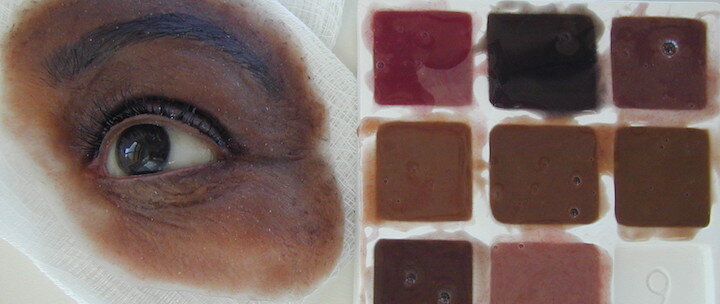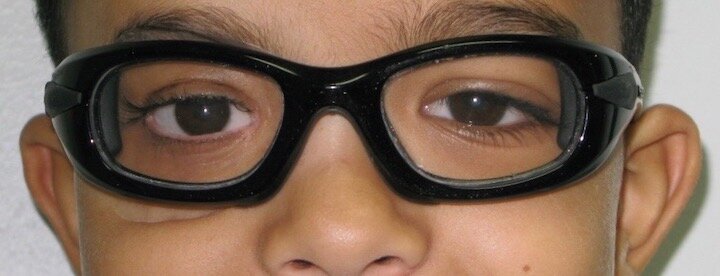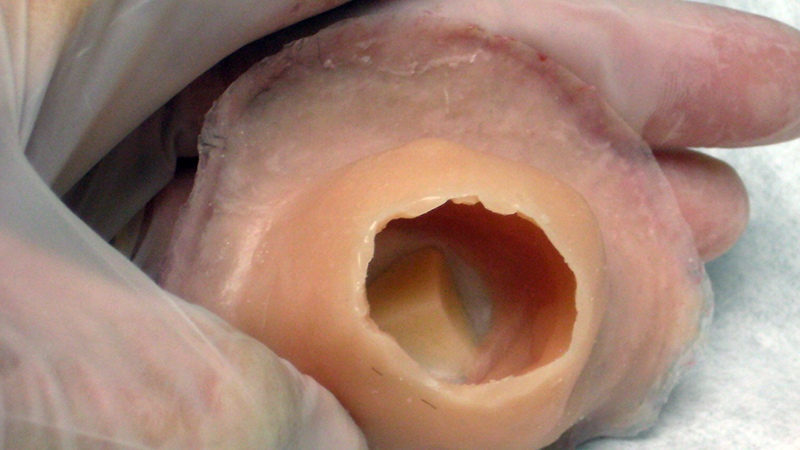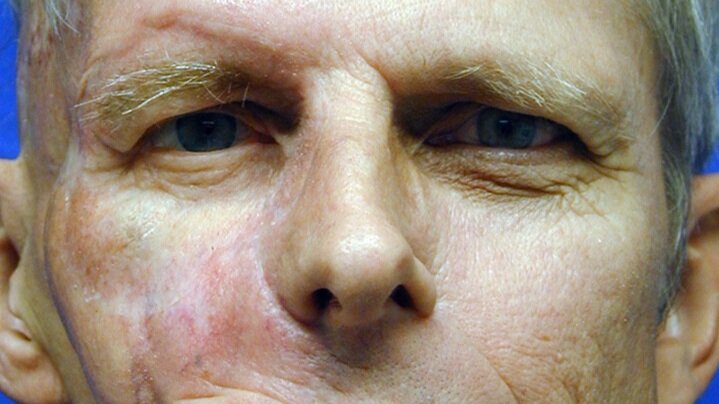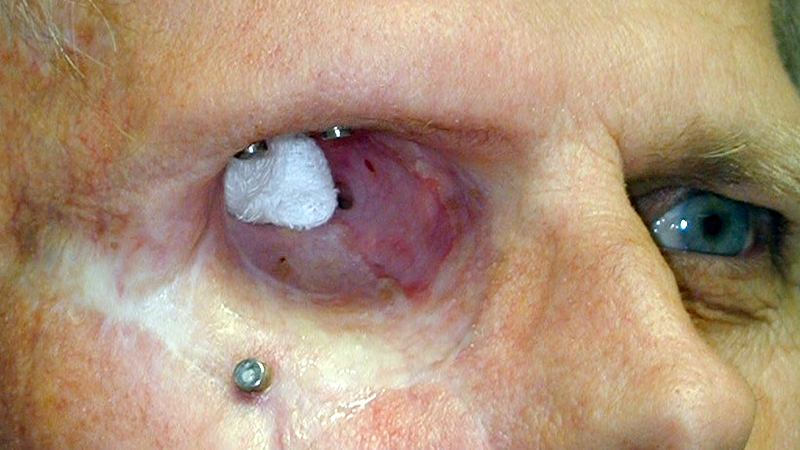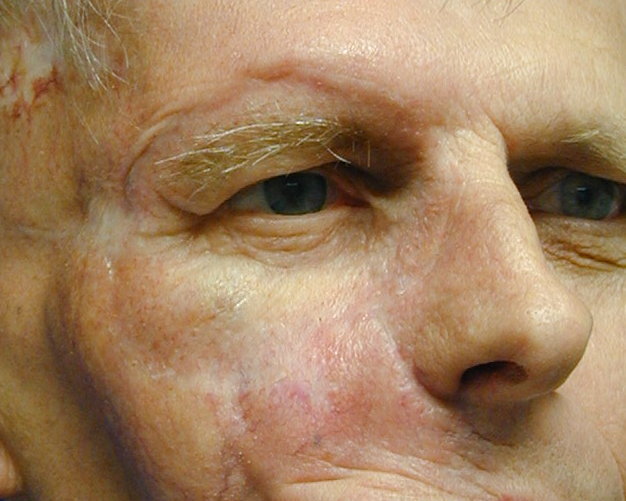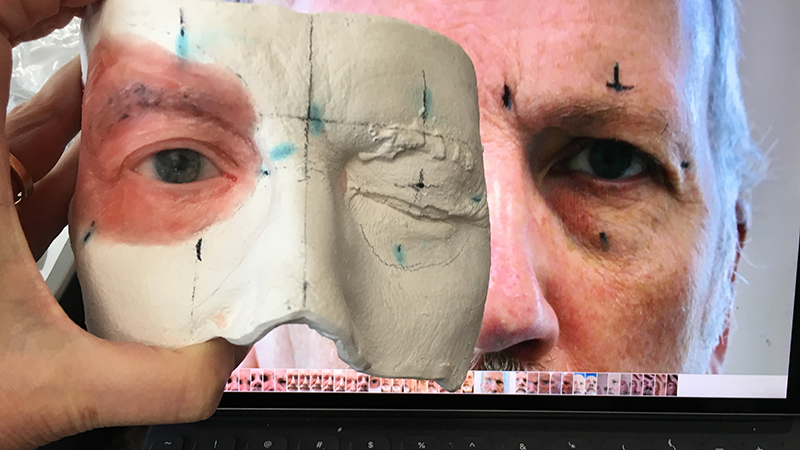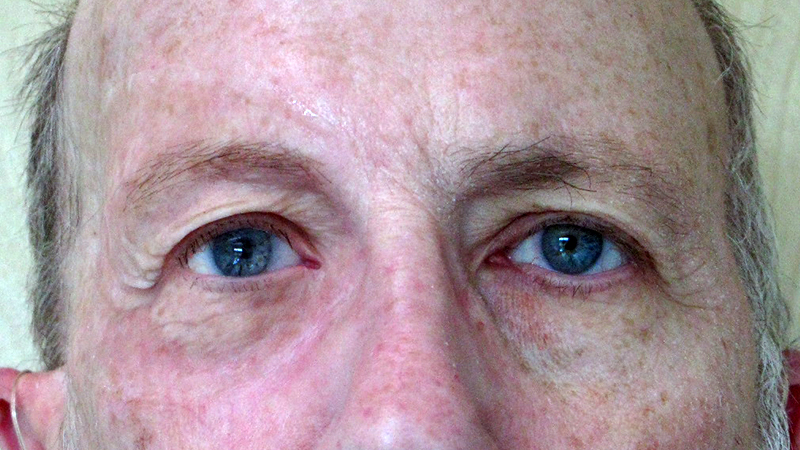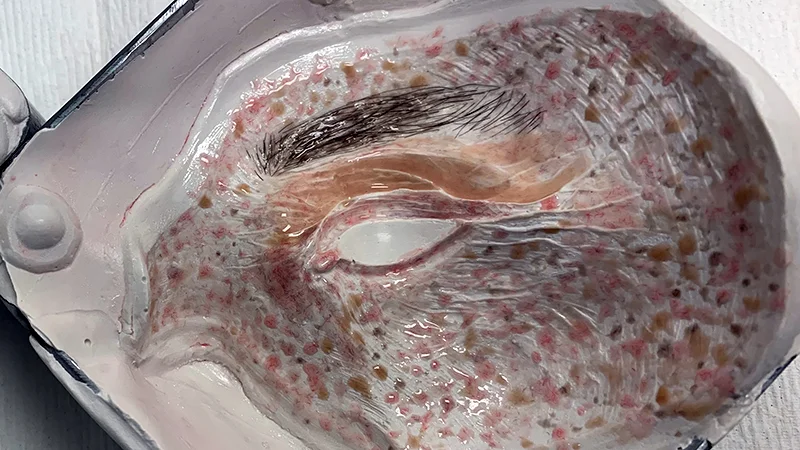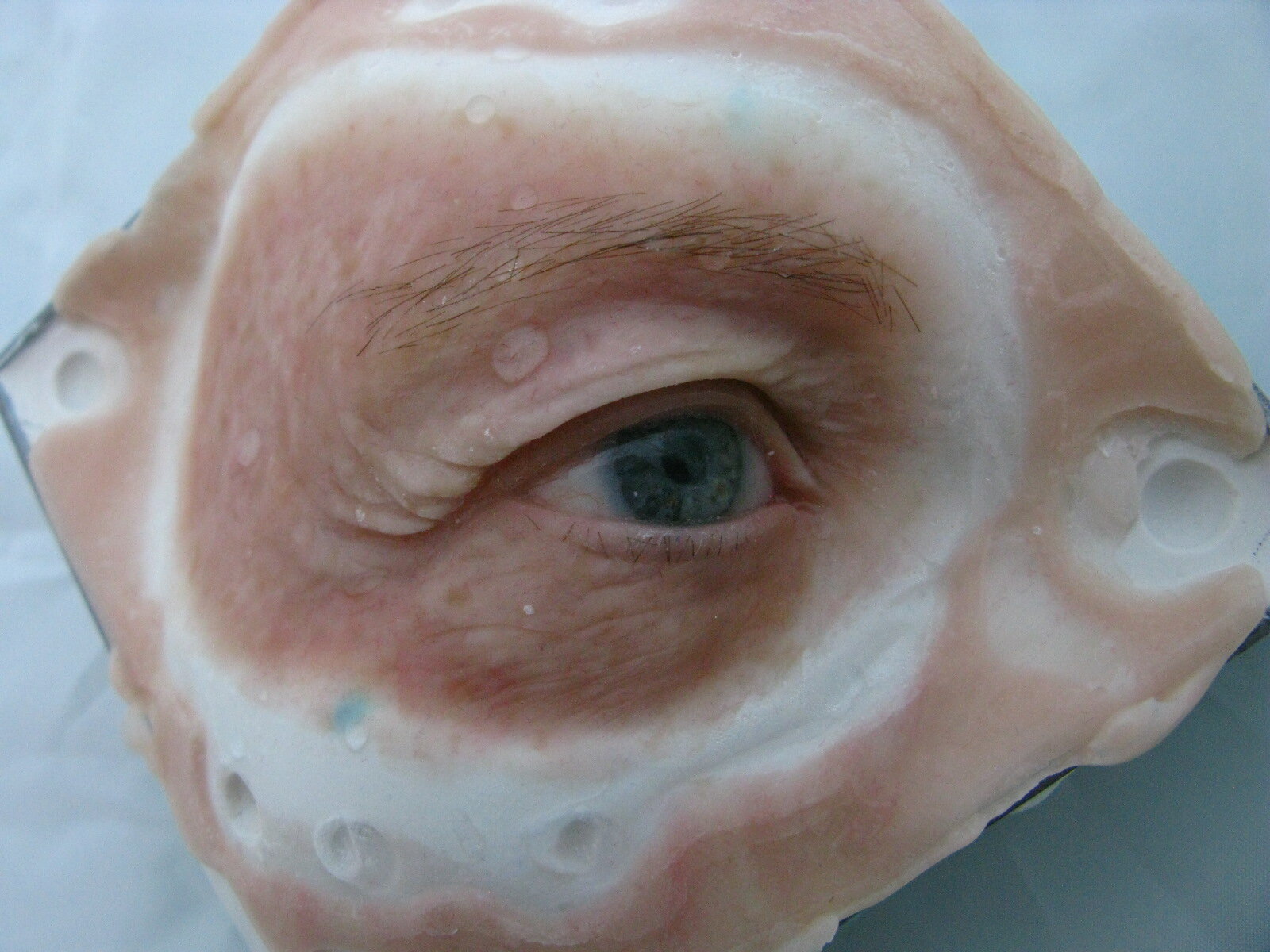Eye prosthesis
About Orbital/Ocular Prostheses
Our patients need ocular prosthetics and orbital prosthetics (artificial eye and eyelids) for different reasons: congenital or birth difference; eye cancer or tumor removal (enucleation or orbital exenteration), including childhood cancers such as rhabdomyosarcoma or retinoblastoma; and traumatic injury – traffic accidents, burns, or other trauma. Medical Art Resources has perfected techniques that result in exceptionally thin and durable edges. Our patients appreciate the practically invisible transition between their skin and their silicone prosthesis.
An orbital prosthesis restores the eyeball and eyelids and may include the eyebrow and part of the forehead, nose, or cheek. We make the ocular (eyeball) portion of the prosthesis from laminated layers of acrylic (plastic) and paint each ocular prosthesis individually to match the unique detailed coloring of your intact eye. We make the eyelids and surrounding tissue (orbital prosthesis) out of silicone and sculpt this to match your anatomy as closely as possible. The ocular is encased within the silicone so that you are inserting a single prosthesis. With every attention to detail, we incorporate natural hair to reproduce absent lashes and eyebrows. We mimic the texture, color and translucency of your skin to create a prosthetic eye with a natural appearance. Your eye prosthetic will be life-like, comfortable, secure, durable and safe. For patients with complex and extensive orbital defects, we build on our considerable clinical expertise and partnership with dental specialists to create effective prosthetic solutions.
Interested in something else? Learn about our other services:
Prosthetic Ear Prosthetic Nose Prosthetic Fingers Prosthetic Toes Athletic Faceguard Eye Gallery
How is an orbital prosthesis attached?
We work closely with you and your family to determine which method of attachment will work best for you. Orbital prostheses can be attached in different ways:
• Medical grade skin adhesive
Upper facial prosthesis side-by-side with natural anatomy
Your facial prosthesis can be attached with special medical adhesive. Most patients easily adjust to using prosthetic adhesives —much like flossing or caring for contact lenses. We offer a variety of adhesive products (a liquid adhesive like ProsAide or Daro or two-sided tape), so that you can choose the one that best meets your needs.
• Anatomical retention–directly to the anatomy
If your eye and eyelids have been removed, the remaining opening may allow us to design an eye prosthetic that slides into place and engages anatomical undercuts for secure attachment with no or little adhesive.
• Craniofacial bone anchored implants
Craniofacial bone anchored implants are small titanium fixtures that are surgically implanted during an outpatient hospital procedure. These implants bond with bone (osseointegrate) to provide a stable foundation for your prosthesis. The surrounding bone bonds with the implants during a 3-6 month healing period. Once the healing period is complete, you can snap the prosthesis onto the implants using clips or magnets; you can attach and remove the prosthesis with ease.
Medical Art Resources was the first practice in Wisconsin to partner with surgeons at Children’s Hospital of Wisconsin and University of Wisconsin Hospital to create implant-retained facial prosthetics. If you choose bone anchored (osseointegrated) implant attachment, we can work with your surgeon or recommend a surgeon close to where you live who is experienced with the Vistafix™ implant system. Together with your surgeon we identify the ideal location for your implants to ensure the best possible prosthetic outcome for you.
Am I a candidate for implants?
You should discuss with your surgeon if you are a candidate for implants as well as what the potential risks and complications of the procedure might be. Patients who have been treated with radiation therapy may require a longer healing period as well as hyperbaric oxygen treatment to decrease risk of implant loss.
Connect with experts who care!
If you are considering an eye prosthesis, we welcome you to meet with us for a new patient consultation and evaluation at no cost to you.
You will meet with one of our certified clinical anaplastologists who will listen to your concerns, examine your affected anatomy, and show you examples of life-like orbital and ocular prosthetics. Our anaplastologist will describe your options for prosthetic attachment and will develop a treatment plan for you. Be assured our clinical staff have earned masters degrees from accredited institutions and are certified in their specialty.
If you are unable to meet with us in person in Milwaukee or Madison, Wisconsin or one of our satellite locations, we can schedule a brief evaluation via Facetime or Skype. If you are not comfortable with a video meeting, you can provide us with photos and schedule a phone meeting.
Please contact us to schedule your complimentary initial consultation and evaluation. There is no obligation or pressure to proceed with treatment.
What Can You Expect?
First and foremost, no need to worry–we are gentle and nothing we do is painful. We custom-make each prosthetic eye in our own laboratory ensuring high quality and individual design. The process requires 4 to 5 appointments which involve these steps:
Intrinsic coloration for an orbital prosthesis with attention to every detail
We first create the eyeball portion of the prosthesis. We select an ocular shape, paint the iris (the central colored area of the eye), and recreate details seen within the sclera (the white of the eye) such as blood vessels.
Molds are made of the eye region using gentle materials.
We reference the intact eye and photos to develop a wax prototype.
You try on the wax prototype to establish a natural contour and fit.
We formulate 5 or more colors to match individual skin tones using health grade silicone.
When the sculpture is finalized, we fabricate a durable mold which allows for reproduction of the silicone prosthesis.
We meticulously paint every skin detail using your color formulae in your mold. We delicately paint color details, such as freckling, onto the surface.
In some cases, eyelashes and brow hairs are inserted for a natural appearance.
We check the orbital prosthesis for precise fit.
We demonstrate wear and care instructions so that you can use your silicone eye prosthesis with confidence.
Want to know more? Visit FAQs
INSURANCE COVERAGE
Extensive color detail is cast into the prosthesis to achieve a realistic color match
If you decide to proceed with your prosthetic treatment plan we will ask you to provide us with insurance or other payer information. With your permission we will request a physician’s order and clinical notes from your doctor. This information will help us predetermine your insurance benefits and submit a prior authorization request. We strive to set fees that are affordable, including reduced fees for replacement facial prostheses. We accept many health insurance options. Please be assured that we will help you navigate the complexity of billing for medical care. We also advocate on behalf of patients for coverage of reconstructive facial prosthetics with insurance providers.
“It would be difficult to improve on Julie or her work. She is such a professional, also very warm, caring and she worked overtime to complete my prosthesis before I returned to New Hampshire for the summer.”


